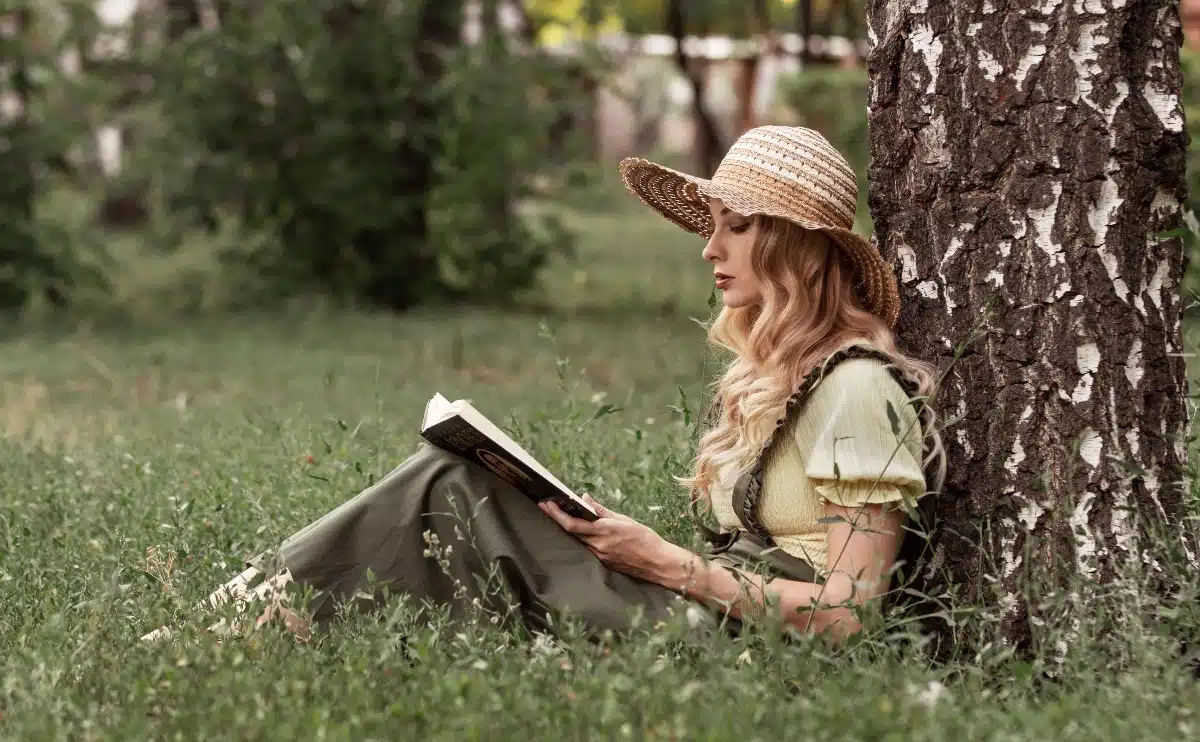Here’s what the Rondel poetry form is:
The rondel is a French verse form typically consisting of 13 octasyllabic lines and multiple refrains, though there are quite a few variants of the form.
It is a descendant of the prolific rondeau, another older French form that also had an impressive amount of influence over formal poetry.
So if you want to learn all about the Rondel poetry type, then you’ve come to the right place.
Let’s jump right in!
- Virelai Poetry Form: Narrate Your Adventures
- Quatern Poetry Form: Emit Quatern’s Spell
- Bref Double Poetry Form: Harbor Twinning Tunes

Forms of Poetry: The Rondel

A rondel is a French verse form originating from around the 14th century and later popularized in English.
It is a descendant of the rondeau form, one of the most influential French poem forms.
Adding to the confusion are a handful of variations such as the rondel supreme and short rondel.
There’s also the roundel, related by virtue of being another relative of the rondeau but nonetheless being its own unique form, so we won’t be covering it in this article since it’s more like a ‘cousin’ than a variant.
I’ll preface this by pointing out the obvious.
There is not a comprehensive guide to all of the branches the rondeau has given birth to over the centuries, at least in English, nor is one really all that feasible.
So while this article will attempt to showcase a few specific forms, there will always be a degree of uncertainty as to the authenticity or lack thereof when writing any form from this complicated family.
English poets have a tendency to set the rondel and its variants to iambic pentameter but in reality, the form is just octasyllabic.
French versions did classically use alexandrine verse, but iambic meter was not standard in the language.
Basic Properties of Rondels

| Rhyme Structure | Strict |
| Meter | Optional |
| Origin | France |
| Popularity | Uncommon in English |
| Theme | Varies |
How Is the Rondel Structured?

The rondel has quite a few variations due to its popularity and longevity, making it hard to pin down an exact structure for the form.
We’ll be focusing on a few of its incarnations but understand that the pattern and rhyme scheme are not necessarily exact from poem to poem.
There is, thankfully, a most common variant of the rondel to fall back to.
The structure for the form is ABba abAB abbaA, a 13-line poem in which the capital letters represent refrains.
Isosyllabic lines (lines of equal lengths) are typically expected for all variants of the rondel, with octasyllabic lines being by far the most common.
How Is the Short Rondel Structured?

The short rondel honestly takes more cues from the rondeau than the rondel.
It’s an 11-line poem, still chiefly with 8-syllable lines, though lines 6 and 11 differ in length.
This is due to how the short rondel handles refrains.
Instead of a full-line refrain, the short rondel only repeats the first phrase of the first line, and only features the one refrain instead of two.
The rhyme scheme for this form is aabbcC ddeeC, giving it noticeably more emphasis on couplets than the standard rondel.
Take note that the refrains ‘C’ and ‘C’ actually emerge from a phrase at the start of the first line, usually being about four syllables, so their rhyme sound is decided midway through the first line of the poem.
How Is the Rondel Supreme Structured?

The rondel supreme is the showboat of the group, with at least three different names. (Rondel supreme, rondel prime, and French sonnet.)
While you might expect a name like ‘supreme’ to indicate a longer poem, the supreme is actually only one line longer than its cousin.
This variant is nearly identical to the rondel itself, with a rhyme scheme of ABba abAB abbaAB.
Put simply, it just repeats each refrain three times instead of abandoning the second line in the last stanza.
Some guides treat this as just a different structure for the original rondel, but if we’re going to be technical then we might as well address it by one of its (several) proper names.
Example of the Rondel

This cactus sits in desert sands
but offers no water to drink.
Travelers who are on the brink
may make of it their own demands
but it shall not take those commands,
no matter what their thirst may think.
This cactus sits in desert sands
but offers no water to drink.
Here in dry and deadliest lands
where it hurts to even just blink,
this cactus with its flowers pink
ignores those dying outstretched hands.
This cactus sits in desert sands
but offers no water to drink
Above is a rudimentary example of the rondel supreme. It could be shortened to a regular rondel by simply removing the last line.
Enjambment, such as that seen from the first to second stanza above, is not a common inclusion in rondels, but there’s no determinate rule against it.
One thing to note is just how demanding the rhyme scheme of a rondel really is.
Rhyme schemes designed solely around two sounds are fairly uncommon in English, precisely because they limit the vocabulary available to the poem.
Romance languages, such as French, Spanish, and Italian, have significantly more shared suffixes due to their conjugations, which is why so many of their forms translate to English with mixed results.
(English, despite its unusual relationship with French, is technically a Germanic language and so does not always pair as well with the Romance languages as you might expect.)
Tips for Writing a Rondel

While this might sound unintuitive, the refrains will actually be the easiest part of the poem.
It’s true that you need to think seriously about what lines will work best as a central thread so that they don’t fall flat in a later verse, but it’s also true that once they’re done you’ve already written almost half of the poem and determined the rhyme scheme.
To that end, it’s highly recommended that you choose easily reusable end sounds.
Common suffixes and short vowel-focused words tend to work well, but you shouldn’t be afraid to resort to slant rhymes and repeated words if absolutely necessary.
Slant rhymes, in particular, are more acceptable in French than they are in English if that assuages your guilt when using them at all.
As for repeated end words, I do advise against falling back on that right away, but it would certainly be better to repeat a word than to force the line to work with an ending that is nigh incomprehensible within the context of the poem.
You’ll ultimately have to decide for yourself where to draw these lines.
As for which rondel variant to write, there seems to be a preference for the rondel supreme overall, which makes sense since it does feel more symmetrical and ‘complete’ intuitively.
Don’t dismiss the short rondel though. It can be viable practice for the longer version.
Poet’s Note

I do try to be as thorough as possible in these articles but I’m going to tell you this right now: The rondel and the greater rondeau family of poems descend from having enough history, variations, and famous entries into their lineage to warrant an entire novel dedicated to just this group of forms.
I won’t be the one writing it, of course, but I just want you to understand how deep this rabbit hole goes if you’re willing to dive in.
Comprehensive Collection of Poetry Forms: Craft Words Into Art

Dare to traverse the entire spectrum of poetic forms, from the commonplace to the extraordinary?
Venture from the quintessential Sonnet to the elusive Mistress Bradstreet stanza, right through to the daunting complexity of Cro Cumaisc Etir Casbairdni Ocus Lethrannaigecht.
For those with a zeal to encounter the full breadth of poetry’s forms, this invitation is yours.
Start exploring the vast universe of poetic ingenuity with our comprehensive array of poetry forms right now!
